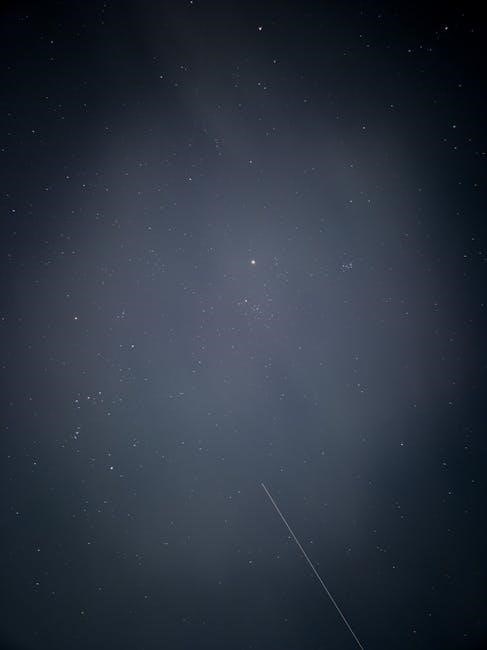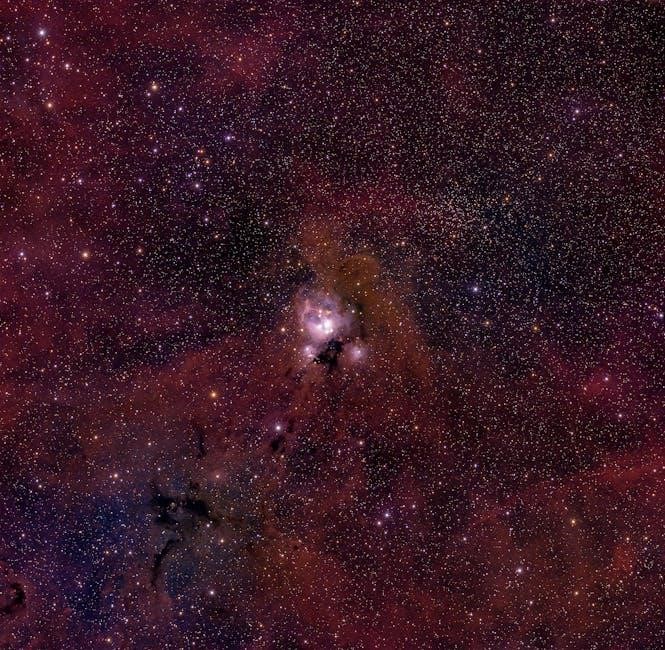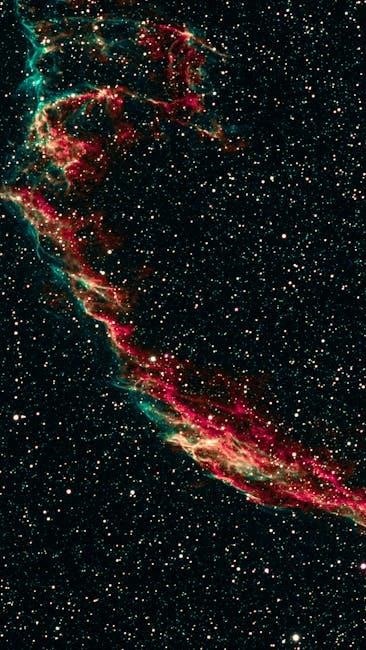The first edition of The Hitchhiker’s Guide to the Galaxy was published in 1979 by PAN Books, marking the transition of Douglas Adams’ BBC radio comedy into print. This paperback edition became a cult classic, blending sci-fi and humor, and is now highly sought after by collectors for its rarity and historical significance in literature.
1.1 Historical Context of the First Edition
The first edition of The Hitchhiker’s Guide to the Galaxy emerged in 1979, a time of vibrant creativity in science fiction. Originally conceived as a BBC radio comedy in 1978, the book marked a pivotal shift in blending humor with sci-fi, resonating with audiences amid the late ’70s cultural landscape. Its unique voice and irreverent style quickly captured a cult following, setting the stage for its enduring legacy.
1.2 The Significance of the First Edition in Sci-Fi Literature
The first edition of The Hitchhiker’s Guide to the Galaxy marked a groundbreaking moment in science fiction by blending humor with existential themes, challenging traditional genre norms. Its innovative storytelling and satirical approach redefined sci-fi, making it more accessible and paving the way for future writers to experiment with comedy and speculative fiction.
It remains a cornerstone of the genre, influencing countless works and cementing its legacy as a cultural icon.

Origins of “The Hitchhiker’s Guide to the Galaxy”
The novel originated from a 1978 BBC radio comedy series written by Douglas Adams, blending humor and imaginative storytelling, which later transitioned into the iconic book.
2.1 The BBC Radio Comedy Roots
The story began as a 1978 BBC Radio 4 series, conceived by Douglas Adams. The six-episode comedy science fiction program, produced by Geoffrey Perkins, introduced Arthur Dent’s misadventures. Its unique humor and imaginative narrative quickly gained a cult following, laying the foundation for the book. The radio format allowed Adams to experiment creatively, blending wit and sci-fi elements that became the novel’s hallmark.
2.2 Transition from Radio to Print
The success of the BBC radio series led to its adaptation into a novel. Published in 1979 by Pan Books, the book expanded on the radio scripts, adding new characters and plot twists. Douglas Adams reworked the material, enhancing its humor and depth. The transition introduced the story to a broader audience, solidifying its place in science fiction literature.
Publishing Details of the First Edition
Published by Pan Books in 1979, the first edition was a paperback featuring distinctive cover art and typography that set it apart as a unique release.
3.1 Publisher and Publication Date
The first edition of The Hitchhiker’s Guide to the Galaxy was published by Pan Books in October 1979. This marked the transition from its radio roots to print, gaining widespread popularity. The publication date coincided with the rise of comedic science fiction, establishing Douglas Adams as a prominent author in the genre.
3.2 Physical Description and Format
The first edition of The Hitchhiker’s Guide to the Galaxy is a paperback with a vibrant cover designed by Hipgnosis. It features 320 pages, printed in a clear, readable font. The binding is perfect bound, with a glossy finish that enhances durability. This format made the book accessible and contributed to its widespread popularity among readers.
Collectibility and Value
The first edition is highly collectible, especially in good condition, making it a significant investment for fans and a key item in any sci-fi collection.
4.1 Factors Affecting the Book’s Value
The value of the first edition is influenced by its condition, rarity, and demand. Copies in pristine condition with intact dust jackets are highly sought after, commanding premium prices. Provenance, such as a signed copy, significantly increases value. Additionally, the scarcity of first printings and the cultural significance of the novel drive its desirability among collectors and fans of science fiction.
4.2 Rare and Signed Copies
Rare and signed copies of the first edition are highly prized by collectors. Copies signed by Douglas Adams significantly increase the book’s value, especially if in excellent condition. Limited edition releases and unique bindings further enhance rarity. Auctions often showcase these treasures, with signed copies fetching thousands of dollars. Their scarcity and cultural significance make them true gems for dedicated fans and serious collectors.

Plot and Main Characters
The novel follows Arthur Dent as Earth is destroyed to make way for a bypass. Joined by Ford, Trillian, Zaphod, Marvin, and Slartibartfast, Arthur explores the galaxy, encountering bizarre worlds and characters while questioning life’s meaning.
5.1 Summary of the Novel’s Plot
The story begins with Earth’s destruction to build a hyperspace bypass. Arthur Dent, rescued by his friend Ford, a hitchhiking alien, embarks on a chaotic journey through space. Aboard the Heart of Gold, they join Zaphod Beeblebrox, Trillian, and Marvin, encountering bizarre planets, Vogons, and the supercomputer Deep Thought, while exploring themes of existence, humanity, and the universe’s absurdity.
5.2 Key Characters and Their Roles
The main characters include Arthur Dent, an ordinary Earthman, and Ford Prefect, an alien researching Earth for the Guide. Trillian, a human woman, joins the adventure, while Zaphod Beeblebrox, the eccentric two-headed president, leads the group. Marvin, the depressed android, provides dark humor, and Slartibartfast, a planet designer, adds depth. Each character’s unique traits drive the story’s unpredictable journey through space.

Themes and Humor in the First Edition
The first edition masterfully blends satire with absurdity, critiquing societal norms, technology, and bureaucracy through humor. Its comedic genius lies in making profound themes entertainingly accessible.
6.1 Satirical Elements and Social Commentary
The first edition of The Hitchhiker’s Guide to the Galaxy is renowned for its sharp satire, targeting modern society, technology, and bureaucracy. Adams uses humor to critique human behavior, politics, and existential themes. The demolition of Earth for a hyperspace bypass and the supercomputer Deep Thought’s quest for the “Answer to Life” exemplify its clever commentary on humanity’s flaws and the absurdity of grandiose endeavors.
6.2 Unique Blend of Sci-Fi and Comedy
Douglas Adams masterfully fused science fiction with comedy, creating a narrative that balances futuristic concepts with humor. The first edition’s lighthearted take on intergalactic travel, alien encounters, and cosmic absurdity captivated readers. Characters like Ford Prefect and Marvin the android add comedic depth, while the Vogons’ atrocious poetry and bureaucratic red tape showcase Adams’ ability to blend genres seamlessly, offering a fresh, entertaining perspective on traditional sci-fi themes.
Reception and Reviews
The first edition received widespread critical acclaim for its originality and humor, quickly gaining a cult following. Its unique voice resonated with readers worldwide, solidifying its place in sci-fi history.

7.1 Initial Critical Response
The first edition of The Hitchhiker’s Guide to the Galaxy received positive reviews for its humor and originality, quickly gaining a cult following. Critics praised its unique blend of comedy and science fiction, though some found its absurdity off-putting. Despite mixed reactions, the book became a celebrated work in the sci-fi genre, appreciated for its fresh perspective and creative storytelling. Its impact was significant, setting it apart from traditional sci-fi narratives.
7.2 Audience Reception and Popularity
The first edition of The Hitchhiker’s Guide to the Galaxy quickly resonated with readers, blending humor with existential themes. Its unique voice attracted a broad audience, making it a cultural phenomenon. Fans appreciated its clever wit and relatable commentary on life and technology, solidifying its place as a beloved and influential work in science fiction.

Impact on Popular Culture
The Hitchhiker’s Guide to the Galaxy influenced TV shows, films, music, and video games, creating iconic phrases like “Don’t Panic!” and inspiring a cult following worldwide.
8.1 Influence on Other Media and Adaptations
The first edition of The Hitchhiker’s Guide to the Galaxy inspired numerous adaptations, including TV series, films, and stage productions. It began as a BBC radio comedy before transitioning to print, paving the way for its multimedia success. The book’s unique humor and sci-fi elements have influenced other creators, making it a cornerstone of pop culture, with its themes and characters enduring across generations.
8.2 Legacy of the First Edition
The first edition of The Hitchhiker’s Guide to the Galaxy left an indelible mark on literature and pop culture. Its unique blend of humor and sci-fi redefined the genre, inspiring countless authors and creators. The book’s cult status grew rapidly, cementing its place as a timeless classic. Its influence continues to resonate, making it a cornerstone of comedic science fiction and a beloved favorite among readers worldwide.

The Author: Douglas Adams
Douglas Adams (1952–2001) was a renowned English writer, humorist, and sci-fi author, best known for The Hitchhiker’s Guide to the Galaxy, which became a cult classic and inspired numerous adaptations.
9.1 Biography and Writing Style
Douglas Adams, born in 1952 in Cambridge, England, was a visionary writer known for blending humor with science fiction. His unique writing style, often described as witty and absurd, captivated readers. Adams’ background in radio and television comedy heavily influenced his narrative approach, making his work both engaging and intellectually stimulating. His ability to merge satire with sci-fi elements created a distinctive voice in literature.
9.2 His Role in Shaping the Novel
Douglas Adams’ creative direction and humor were pivotal in shaping The Hitchhiker’s Guide to the Galaxy. He transformed the radio series into a novel, infusing it with his unique wit and imaginative storytelling. Adams’ ability to blend absurdity with intellectual depth set the tone for the book’s success, making it a landmark in comedic science fiction. His rewrites and improvements ensured a cohesive narrative.

The Trilogy and Beyond
The Hitchhiker’s Guide series expanded into five books, exploring new adventures and characters. Adaptations include films, TV shows, and stage plays, broadening its reach.
10.1 Subsequent Books in the Series
Following the first edition, Douglas Adams expanded the series with The Restaurant at the End of the Universe (1980), Life, the Universe and Everything (1982), and So Long, and Thanks for All the Fish (1984). A fifth book, Mostly Harmless (1992), concluded the series. Each installment introduced new characters and deepened the cosmic comedy, blending humor with sci-fi themes. The series became a cult classic, transcending its radio origins.
10.2 Expansion into Other Media Formats
The success of the first edition led to adaptations across various media. A BBC television series aired in 1981, featuring animations and characters from the book. The story also transitioned into comic books, video games, and stage plays, widening its audience. These expansions showcased the versatility of Adams’ universe, blending humor and sci-fi to captivate fans beyond literature, solidifying its cult status and cultural influence.

Rare Editions and Special Releases
Rare editions, including limited printings and signed copies, are highly sought by collectors. Special releases feature unique covers, artwork, and forewords, enhancing their collectibility and value.
11.1 Limited Editions and Special Printings
Limited editions and special printings of the first edition are highly coveted. These include exclusive covers, unique artwork, and special bindings. Some feature slipcases or numbered copies, while others include forewords by notable figures. Publishers like Easton Press and The Folio Society have released elegant versions, making these editions stand out for fans and collectors seeking rare and visually stunning variations of the beloved novel.
11.2 Collectible Value of Rare Copies
Rare copies of the first edition hold significant collectible value, especially those in pristine condition. Signed editions or those with unique provenance command high prices at auctions. The value fluctuates based on rarity, condition, and demand. Collectors often seek first printings with specific publisher markings, making these copies highly sought after and a valuable addition to any sci-fi literature collection.

The Book’s Design and Typography
The first edition features a simple, iconic cover design with a yellow background and black text. Its clean typography contrasts humorously with the novel’s chaotic narrative, enhancing its cult appeal and recognizable identity in science fiction literature.
12.1 Cover Art and Illustrations
The first edition’s cover features a bold, eye-catching design with a yellow background and black text, emphasizing the book’s title and subtitle. The minimalist approach, devoid of elaborate illustrations, reflects the novel’s comedic and satirical tone. This simple yet striking design has become iconic, symbolizing the book’s unique blend of humor and science fiction while remaining instantly recognizable to fans worldwide.
12.2 Typography and Layout Choices
The first edition features a clean, readable typography with a standard font size and spacing, ensuring accessibility. The layout is straightforward, with clear chapter divisions and minimal embellishments. This practical design complements the book’s comedic and narrative flow, enhancing readability while maintaining a professional appearance that appeals to a broad audience.
Modern Relevance and New Adaptations
The first edition’s themes of technology and absurdity remain timeless, inspiring new adaptations like TV series and stage shows, captivating both original and new fans.
13.1 Recent Stage Productions and Live Shows
Recent stage productions of The Hitchhiker’s Guide to the Galaxy have delighted audiences with creative interpretations, blending humor and sci-fi elements. Productions in the UK and US have featured innovative sets, costumes, and special effects, staying true to the book’s quirky spirit. Live shows often incorporate audience interaction, enhancing the comedic experience and introducing the story to new generations of fans;
13.2 Upcoming Adaptations and Projects
New adaptations of The Hitchhiker’s Guide to the Galaxy are in development, including a highly anticipated TV series by Hulu. Plans for feature films and stage plays are also underway, aiming to capture the book’s unique humor and sci-fi charm. These projects promise to introduce the story to new audiences while honoring its legacy, ensuring its enduring appeal in modern entertainment.
The First Edition’s Place in Literary History
The first edition of The Hitchhiker’s Guide to the Galaxy holds a pivotal role in sci-fi literature, blending humor with cosmic themes and influencing countless authors and adaptations.
14.1 Its Role in the Sci-Fi Genre
The first edition of The Hitchhiker’s Guide to the Galaxy revolutionized science fiction by blending humor with cosmic themes, challenging traditional narratives. Its innovative approach influenced countless authors, redefining the genre’s boundaries. The book’s fresh take on sci-fi resonated with audiences, making it a cornerstone of modern science fiction and inspiring future adaptations across media. Its legacy endures as a groundbreaking work in the genre.
14.2 Cultural and Literary Legacy
The Hitchhiker’s Guide to the Galaxy first edition has left an indelible mark on popular culture, inspiring countless adaptations and references. Its unique blend of humor and philosophy redefined storytelling, making it a cult classic. The book’s influence extends beyond literature, shaping comedy, television, and film. Its timeless themes and witty satire continue to resonate, ensuring its enduring relevance in both literary and cultural landscapes.
The first edition of The Hitchhiker’s Guide to the Galaxy remains a landmark in sci-fi literature, blending humor and philosophy. Its legacy endures, captivating audiences globally.
15.1 Final Thoughts on the First Edition
The first edition of The Hitchhiker’s Guide to the Galaxy is a cornerstone of science fiction, offering a unique blend of humor and philosophy. Its original release marked a cultural shift, inspiring countless adaptations and solidifying its place in literary history. For collectors, it remains a highly sought-after piece, embodying the creative genius of Douglas Adams and the enduring charm of the series.
15.2 Its Enduring Appeal and Importance
The Hitchhiker’s Guide to the Galaxy first edition remains timeless due to its clever blend of humor, satire, and science fiction. Its unique voice and universal themes resonate with readers, making it a cultural icon. The book’s influence extends beyond literature, shaping comedy and media. Its importance lies in its ability to entertain and provoke thought, ensuring its relevance for future generations.

